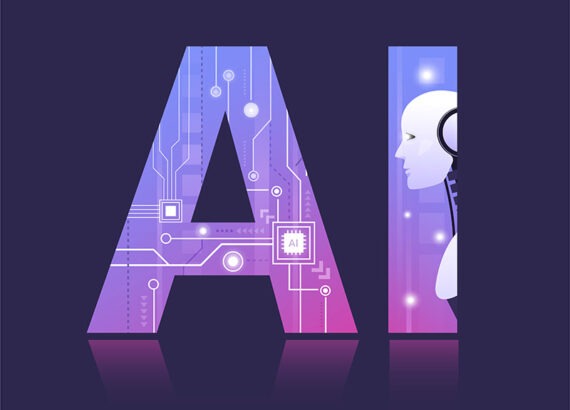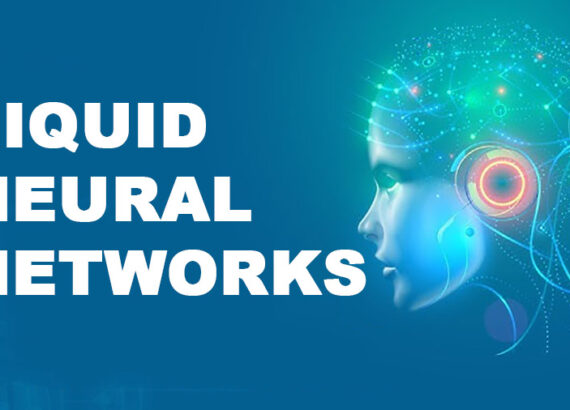Empowering Neuroscientists: Applications and Advancements of Neural Link Technology
Neural Link Technology, also known as brain-computer interfaces (BCIs), has emerged as a groundbreaking field in neuroscience with the potential to revolutionize our understanding of the human brain and enhance our cognitive abilities. By creating a direct connection between the brain and external devices, neural link technology opens up new possibilities for medical treatments, cognitive research, and even augmenting human capabilities.
In this article, we will explore the applications and advancements of neural link technology, delving into its evolution from basic research to clinical applications. Moreover, we will examine its potential implications, ethical considerations, and the challenges and opportunities that lie ahead. The aim is to provide a comprehensive overview of how neural link technology empowers neuroscientists and holds promise for transforming the future of neuroscience and human potential.
1. Introduction: Understanding Neural Link Technology and its Potential Impact
1.1 What is Neural Link Technology?
In its simplest terms, Neural Link Technology is the merging of human brains with advanced technological interfaces. It aims to create a seamless connection between our minds and machines, allowing us to interact with technology directly using our thoughts. Imagine controlling your smartphone or computer just by thinking, without needing to lift a finger. It might sound like science fiction, but neural link technology is making this seemingly magical concept a reality.
1.2 The Promise of Neural Link Technology
The potential impact of neural link technology is vast and awe-inspiring. By bridging the gap between humans and machines, it has the power to revolutionize how we live, work, and communicate. Imagine a world where individuals with paralysis can regain control of their limbs through neural implants or where people with neurological disorders can find relief through targeted brain stimulation. Neural link technology offers hope for transforming the lives of individuals with disabilities and neurological conditions, empowering them to regain independence and improve their quality of life.
2. The Evolution of Neural Link Technology: From Basic Research to Clinical Applications
2.1 Early Developments and Milestones in Neural Link Technology
Neural link technology has come a long way since its inception. It all started with pioneering researchers who began studying the brain’s electrical activity and mapping out its complexities. In the mid-20th century, the development of electroencephalography (EEG) allowed scientists to record brainwaves and decode basic information about brain function. This laid the foundation for further advancements in neural link technology.
2.2 From Animal Studies to Human Trials: Progress in Neural Link Technology
As our understanding of the brain grew, scientists started exploring the possibilities of directly interfacing with the brain. Initially, these experiments were conducted on animals, where researchers successfully demonstrated the ability to control robotic limbs or decipher neural signals. These breakthroughs paved the way for human trials, where volunteers with neurological conditions received brain implants to restore lost functions.
3. Empowering Cognitive Research: Enhancing Brain-Machine Interfaces with Neural Link Technology
3.1 Understanding Brain-Machine Interfaces (BMIs)
Brain-machine interfaces, or BMIs, bridge our brains and external devices. They enable communication and interaction by translating our neural signals into commands that machines can understand. Neural link technology plays a crucial role in advancing BMIs, as it improves the speed, accuracy, and reliability of the interface. This opens up exciting possibilities for cognitive research, allowing neuroscientists to delve deeper into the intricacies of the human mind.
3.2 Neural Link Technology in Advancing Cognitive Research
Neural link technology has the potential to unlock a treasure trove of knowledge about the brain. By providing researchers with the ability to record and stimulate specific neural circuits, it allows for unprecedented insights into brain function and behaviour. This newfound understanding can help unravel the mysteries of cognition, memory, and decision-making. Furthermore, neural link technology can aid in the development of innovative therapies for neurological conditions by precisely modulating brain activity.

4. Revolutionizing Medical Treatments: Neural Link Technology in Neurological Disorders
4.1 Neural Link Technology and its Potential in Treating Brain and Spinal Cord Injuries
For individuals with brain and spinal cord injuries, neural link technology holds immense promise. It offers the potential to restore lost motor functions by bypassing damaged neural pathways and directly stimulating the appropriate brain regions. This technology has already shown remarkable success in enabling paralyzed individuals to regain control of their limbs, providing hope for a future where mobility is no longer limited by physical disabilities.
4.2 Managing Neurological Disorders with Neural Link Technology
Neurological disorders such as Parkinson’s disease, epilepsy, and depression can severely impact a person’s quality of life. Neural link technology offers new avenues for managing and treating these conditions. By modulating neural activity with fine precision, neural link implants can help regulate abnormal brain patterns, reduce seizures, alleviate symptoms of depression, and potentially even restore cognitive function. These advancements have the potential to transform the lives of millions affected by neurological disorders worldwide.
Overall, neural link technology is poised to revolutionize neuroscience, empower individuals with disabilities, and reshape the landscape of medical treatments. As we continue to push the boundaries of what is possible, it is an exciting time to be a neuroscientist, witnessing firsthand the incredible advancements that neural link technology brings to the field.
5. Expanding Frontiers: Neural Link Technology in Enhancing Human Abilities
5.1 Augmenting Human Senses and Abilities with Neural Link Technology
Imagine having the ability to see beyond what the naked eye can perceive or hear sounds that are too faint for normal human ears. With neural link technology, such enhancements are within reach. By establishing a direct connection between the brain and external devices, neural link technology allows us to augment our senses and abilities in ways previously unimaginable.
Through the use of neural implants, researchers are exploring ways to enhance human vision by adding additional spectrums of light or enabling telescopic capabilities. This technology opens up a world of possibilities for individuals with visual impairments, providing them with new means to experience and interact with the world.
Moreover, neural link technology holds the potential to amplify human abilities, such as memory and learning. By creating interfaces that directly interface with the brain, researchers are investigating methods to improve cognitive performance and unlock the full potential of human intelligence. So, forget about downloading knowledge matrix-style, but who knows what new horizons could open up!
6. Ethical and Privacy Considerations: Implications of Neural Link Technology
6.1 Ethical Implications of Neural Link Technology in Research and Treatment
As with any revolutionary technology, there are ethical considerations that must be carefully examined. Neural link technology raises questions regarding consent, privacy, and the potential for misuse. It is crucial to ensure that individuals participating in research or receiving treatment involving neural link technology fully understand the implications and risks involved.
Moreover, the ethical use of neural link technology requires establishing guidelines and regulations to protect the rights and well-being of individuals. Transparency in research, informed consent, and safeguards against unauthorized access to neural data are essential pillars for the responsible development and application of this technology.
6.2 Privacy and Security Concerns in Neural Link Technology
Privacy and security concerns also come to the forefront with neural link technology. The ability to access and manipulate neural data raises the issue of data protection. It becomes imperative to develop robust security measures that safeguard personal information and prevent unauthorized access or manipulation of neural data.
Moreover, the implications of neural link technology extend to the potential violation of individual autonomy and the protection of personal thoughts and experiences. Striking the balance between the benefits of neural link technology and the preservation of privacy rights will be a critical challenge moving forward.
7. The Future of Neural Link Technology: Opportunities and Challenges
7.1 Potential Applications and Future Directions of Neural Link Technology
The future of neural link technology is brimming with possibilities. From revolutionizing healthcare to advancing our understanding of the human brain, the potential applications are vast. Neural link technology holds promise in treating neurological disorders, enabling groundbreaking research on brain function, and enhancing human capabilities.
In addition, the integration of neural link technology with artificial intelligence and robotics opens the door to new realms of human-machine interaction. This synergy could lead to profound advancements in fields such as prosthetics, neurorehabilitation, and brain-computer interfaces, to name just a few. Stay informed about the future of brain-computer interfaces and their impact on human cognition and health.
7.2 Challenges and Limitations in Implementing Neural Link Technology
Despite the optimism surrounding neural link technology, there are challenges to overcome. Developing safe and reliable neural interfaces, ensuring long-term compatibility with the human body, and addressing ethical and privacy concerns represent significant hurdles.
Moreover, the cost and accessibility of neural link technology may limit its widespread implementation. It is necessary to strive for affordability and inclusivity to ensure that the benefits of this technology are accessible to all, irrespective of socioeconomic status or geographical location.
8. Harnessing the Power of Neural Link Technology for the Benefit of Society
Neural link technology presents a remarkable path towards advancing neuroscience and empowering individuals. It offers the potential to enhance human abilities, improve cognitive performance, and revolutionize healthcare. However, it is vital to navigate the ethical and privacy considerations, establish robust regulations, and address the technical challenges.
By working together, researchers, policymakers, and society can harness the power of neural link technology responsibly and ensure that its benefits are equitably distributed. As we unlock the mysteries of the human brain, let us tread carefully, always prioritizing the well-being and autonomy of individuals, while embracing the profound opportunities that lie ahead. Embrace your inner cyborg!
9. Conclusion
In conclusion, neural link technology represents a remarkable leap forward in neuroscience and has the potential to reshape numerous aspects of our lives. From advancing cognitive research and revolutionizing medical treatments to expanding human abilities, the applications and advancements of neural link technology are vast.
However, with these advancements come important ethical considerations and the need for privacy protections. By navigating these challenges and harnessing the power of neural link technology responsibly, we can unlock its full potential for the benefit of society. As we continue to explore the frontiers of this field, we must embrace collaboration, innovation, and a balanced approach to ensure that neural link technology becomes a force for positive change in the realm of neuroscience and beyond.
FAQ
1. What is Neural Link Technology?
Neural Link Technology, also known as brain-computer interfaces (BCIs), is a field of neuroscience that involves creating direct connections between the brain and external devices. This technology allows for bidirectional communication between the brain and devices, opening up possibilities for medical treatments, cognitive research, and enhancing human abilities.
2. What are some potential applications of Neural Link Technology?
Neural Link Technology has a wide range of potential applications. It can be used in medical treatments for neurological disorders, such as brain and spinal cord injuries. It also holds promise in cognitive research by enhancing brain-machine interfaces and providing insights into the functioning of the human brain. Furthermore, neural link technology has the potential to augment human abilities, such as enhancing senses or cognitive performance.
3. What are the ethical considerations associated with Neural Link Technology?
The advancements in Neural Link Technology raise important ethical considerations. These include issues of informed consent, potential risks and benefits, privacy concerns, and the responsible use of this technology. It is crucial to engage in ongoing ethical discussions and ensure that the development and implementation of neural link technology adhere to ethical guidelines and protect the rights and well-being of individuals.
4. What are some challenges in implementing Neural Link Technology?
Implementing Neural Link Technology faces several challenges. These include technical hurdles such as developing reliable and safe brain-computer interfaces, ensuring long-term compatibility and durability of implantable devices, and interpreting complex neural signals. Additionally, regulatory and safety concerns, as well as addressing public scepticism and understanding, are also significant challenges that need to be addressed for the widespread adoption and acceptance of neural link technology.
Thank you for reading 🙂
Buy Web Hosting at an affordable price: Buy Now
If you want to build your website at an affordable price contact: www.nextr.in
Read this: How To Become A Web Developer?


















